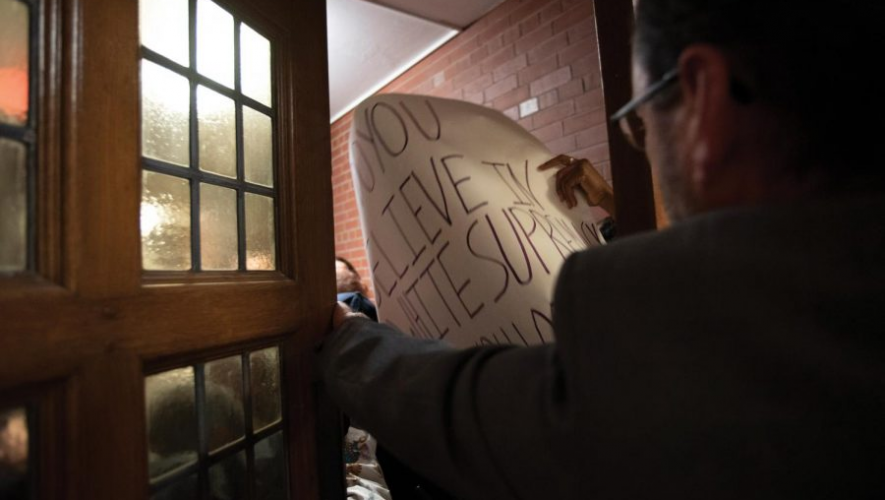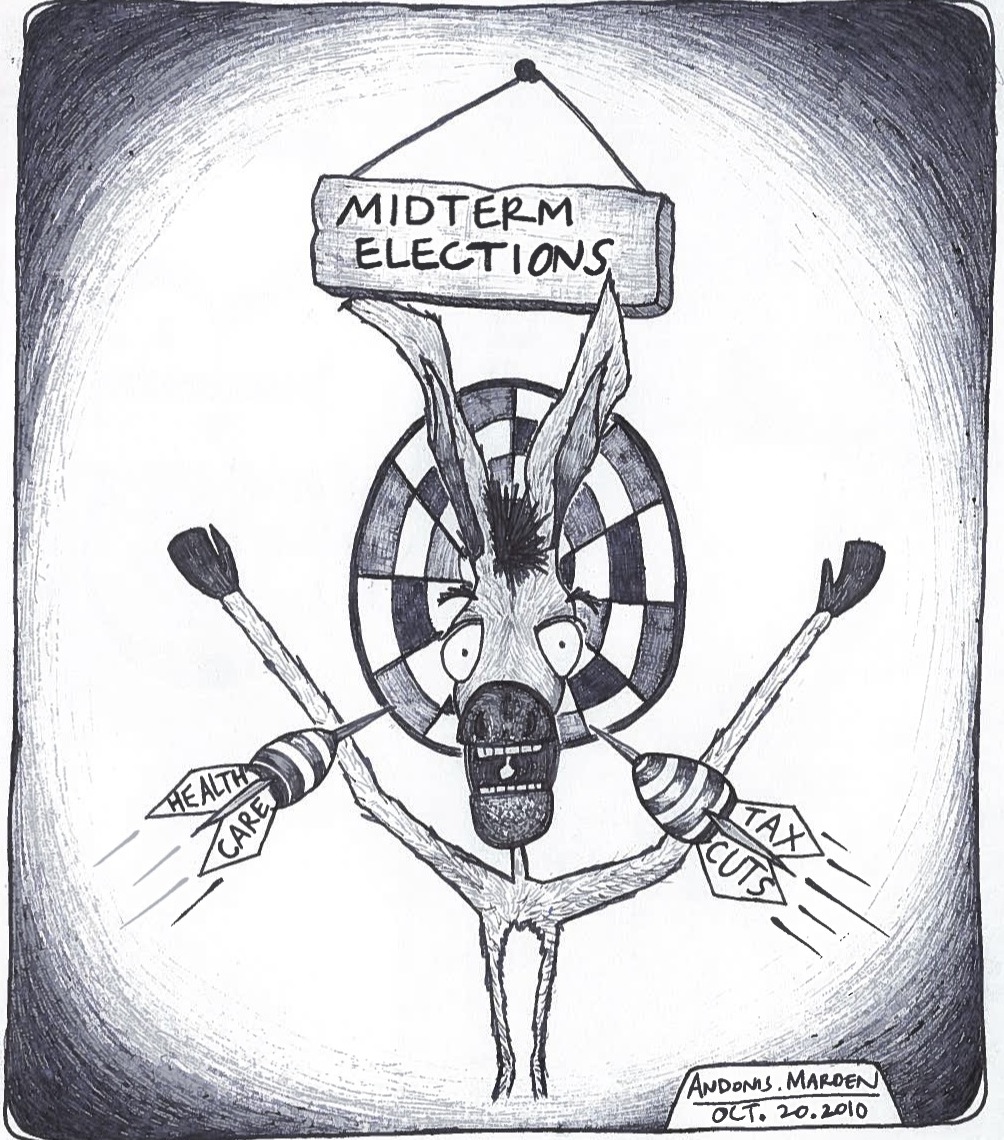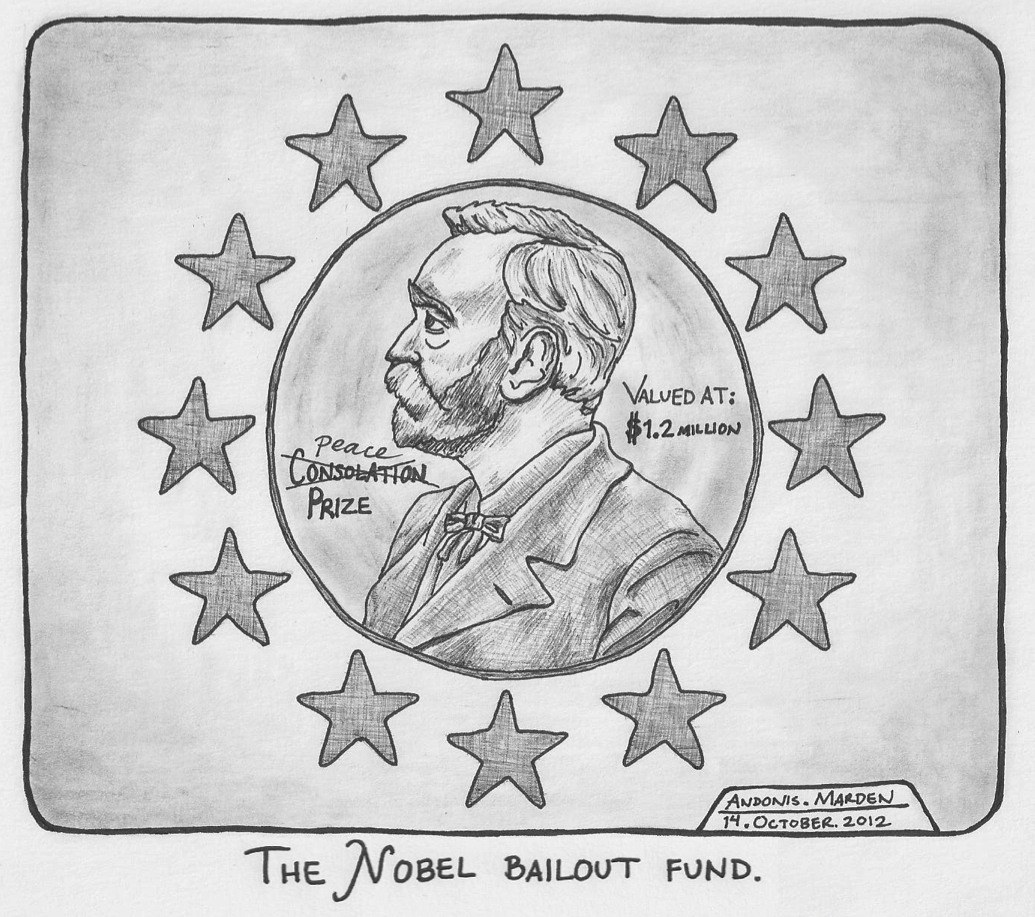On November 5, 2019, former Attorney General Jeff Sessions visited Northwestern University to speak to students about Trump’s agenda. Sessions’s visit drew about 150 protesters, some of whom climbed through windows or pushed through the doors of the building in an attempt to interrupt the talk. As the university’s student paper, the Daily Northwestern sent a reporter to cover his talk, another to cover the protest, and a photographer to shoot both events.
Almost immediately, the paper faced criticism. Some student protesters found photos of themselves posted on reporters’ Twitter accounts to be “retraumatizing and invasive.” Others complained that the reporters had invaded their privacy by using the Northwestern directory to find phone numbers and texting students to request interviews. Some were concerned that the information printed by the Daily Northwestern could allow the university to identify them, resulting in backlash for their participation in the protest.
In response, the editorial board issued an opinion piece five days after the protest, apologizing for these actions and laying out steps it planned to take to minimize the distress its reporting caused in the community. In an unpleasant twist of fate, the apology drew more ire than the coverage. Many journalists took particular offense to the line, “While our goal is to document history and spread information, nothing is more important than ensuring that our fellow students feel safe.” Critics pointed out that such an argument, applied more generally, would prevent serious and important news from receiving coverage. Columnists at the Washington Post, Chicago Tribune, New York Times, and more decried the apology. Even Charles Whitaker, dean of Northwestern’s journalism school, called the move a “well-intentioned gesture [that] sends a chilling message about journalism and its role in society.”
The question of how reporters should conduct themselves at protests is complicated, and the stakes are high. A failure to get the story right can be embarrassing and painful for everyone involved, but a failure to respect and protect sources can put protesters at risk of retaliation and destroy community confidence in the media.
The Daily Northwestern case, as well as supplemental case studies, reveal lessons on how journalists can cover protests in a way that both protects people exercising their First Amendment rights and accurately informs the public. The key here is that journalists must balance the need to build a compelling story with the need to reduce harm to the communities on which they are reporting—often, this means leaning farther into the latter than their first instinct might indicate.
Harm reduction measures, in this context, are policies designed to lessen the negative social and physical consequences associated with reporting, but that do not interfere with the accuracy or detail of the final story. Employing harm reduction measures is not just an ethically sound journalistic practice, but also a way to improve the resulting coverage.
The Daily Northwestern
In the Daily Northwestern case, the most public criticism came from Northwestern student activist Ying Dai, who retweeted a photo of the protests from a Daily Northwestern photojournalist’s account and asked them to stop the trauma porn. “I was on the ground being shoved and pushed hard by the police. You don’t have to intervene but you also didn’t have to put a camera in front of me top down,” said Dai. “As a fellow photographer i know how this works & [there are] 20 other ways to document this.”
Students also complained that the methods used to take photos and gather quotes felt invasive. The editorial board ultimately redacted one quoted student’s name to protect the student from retaliation, although it did not detail whether that redaction was the result of a student complaint.
Conversely, others found the Daily Northwestern was simply pursuing the story. Most of the arguments against its apology rested on one central point: the newspaper had done nothing wrong. By protesting in public, the students were forfeiting their right to privacy and actively inviting coverage. Using the directory to contact students and reaching out by text might have been a bit informal, but the students retained the right to decline to comment, and there were no reports of the reporters’ conduct crossing the line into harassment.
The editorial even noted that the paper retroactively anonymized a source to protect them from retaliation by the university; this would indicate that the Daily Northwestern was acting in good faith and working to protect students from harm for exercising their First Amendment rights. As dissenting Daily Northwestern columnist Zach Kessel put it, the reporters took “actions every reputable news outlet would consider above board—necessary, even, to the basic project of reporting. Finding out the truth is inherently intrusive and invasive . . . If journalists are restricted by the need to ensure that subjects are completely happy with the coverage, they can’t do their jobs.”
Students who criticized the paper seem to believe its reporters could have accomplished the same ends while conducting themselves more sensitively and, to a lesser degree, that the coverage could put protesters at risk of retaliation. There is some validity to this point; the journalistic product is generally better when sources feel safe, comfortable, and respected enough to share openly with reporters. When a community tells its local paper how it would like to be treated, it benefits the paper to consider that feedback. While news outlets must evaluate this feedback critically, those complaints should still be considered; journalism at its best serves and converses with its community.
In the case of the Daily Northwestern, an apology probably was not necessary, given that looking students up in the directory and taking photos in public are not particularly objectionable; a public apology was an outsized response. However, the students also had a point that it was possible to produce a story of the same caliber without putting the story’s subjects in an uncomfortable position. If the paper wants to report on its community effectively, it must listen to the community’s criticisms and adjust reporting methods to achieve the same ends while also reducing harm. This could mean asking students for consent before running their photographs, preemptively discussing the possibility of anonymity with sources, or using photographs taken from a distance instead of “put[ting] a camera in front of [students] top down.”
Reporting on Protests in the Wider World
The Daily Northwestern is not the only student paper that has come under fire for its protest coverage. On September 13, 2019, the Harvard Crimson published an article about a campus protest against United States Immigration and Customs Enforcement (ICE), and contacted (but ultimately couldn’t reach) ICE for comment.
Act on a Dream, the campus organization that put together the rally, was concerned that ICE might deport or otherwise retaliate against protesting students. It responded with a petition demanding that the Crimson vow never to contact ICE again, and apologize for the harm it had inflicted. The Crimson maintained that an organization receiving negative coverage in the press had a right to respond and give its perspective.
As in the Daily Northwestern case, the community was left concerned that it was not being adequately protected from retaliation, while the publication maintained it was simply engaging in standard journalistic practices intended to discover and document the truth.
It is not just university papers that grapple with this question, which has been a sticking point in regards to Black Lives Matter protests too. Many activists point to the iconic 2014 photo of protester Edward Crawford in St. Louis throwing back a can of tear gas that police shot into a crowd. A year after the photo was taken, Crawford was charged with assaulting an officer for his actions in the picture. Three years after the photo was taken, Crawford died; the police ruled his death a suicide.
In the words of NPR reader Leah Block, “Do not forget the Ferguson protesters who died under ‘mysterious circumstances’—Deandre Joshua, Darren Seals, MarShawn McCarrel, Edward Crawford Jr., Danye Jones (whose mother was an active protester), and Bassem Masri. Their deaths were not coincidental. I urge NPR to take down the photos of protesters or blur their likenesses entirely. Otherwise, make sure that you have the photo subjects’ consents to post their photos and put them at risk, and preferably include a notice of this consent in all of your photo/video captions.” The point is, protesters often have legitimate reason to fear retaliation.
Despite these calls, some outlets still publish photos displaying protesters’ faces or other identifying characteristics. NPR’s Public Editor Kelly McBride responded to Block in a June 2020 opinion piece, explaining her outlet’s decision to publish unedited photos of protesters. “Protesters’ faces communicate a range of emotions—joy, anger, sorrow,” McBride wrote. “Without those emotions, the story would be incomplete and inadequate. Most—though I recognize that certainly not all—have chosen to be part of these protests fully aware they are entering a public space and at personal risk.”
But even while defending her outlet’s refusal to blur faces, McBride still rightly makes space for harm reduction. She encourages reporters to “consider whether [a photograph in question] is the best and only image that conveys an important story that can’t be told any other way—and if possible find another image. When you have a satisfactory alternative, why not use it? Otherwise, the audience will wonder about your judgment—rather than focus on the story you want them to know.”
Applying Harm Reduction Measures
Ultimately, much of the debate seems to boil down to one question: to what degree are reporters responsible for protecting protesters from retaliation? Ideally, this would not be a reporter’s job—governments, universities, and other major institutions should have comprehensive policies to protect those exercising their First Amendment rights. However, that’s not the world we live in, and as such, some of that responsibility falls on reporters.
But we should reframe that question from a defensive perspective to a proactive one. Instead of asking, “What are we legally and ethically responsible for doing?” reporters should ask, “How can I best serve all members of my community with my work, including those who are protesting?” All of a sudden, it is much easier to see the value in harm reduction measures, and much easier to spot ways to employ them.
As McBride mentioned, reporters can ask themselves if a questionable photograph or quote is the best and only way to convey an important story. In the case of the Daily Northwestern, photojournalists could have obtained protesters’ consent before publishing photos of them; in a protest attended by around 150 people, the chances of getting a good shot that tells the story and includes a subject willing to have their photo taken are quite good. This would have kept focus on the ethics of Sessions’s visit instead of the ethics of the paper’s conduct, which benefits both the paper and the article’s subjects.
Speaking more broadly, relying on journalists who are members of the communities they cover would mean that the people shaping the narrative would be intimately familiar with the fears, concerns, and dangers their subjects face. Journalists could shape their questions in culturally sensitive ways that could help their subjects open up to them further, and give them valuable background about why certain topics or situations might make a source feel invaded upon or threatened.
Another possible harm reduction method would be remaining in conversation with sources throughout the reporting and writing process. Reporters must continue to use their editorial judgement, but discussing how to frame an article can give the reporter new insights into which parts of the story are important to the community. It also provides an opportunity to root out content the reporter finds innocuous but that the community would find offensive or inaccurate.
This is not to say that papers should never publish anything that offends their community. Sometimes including a photograph of a subject’s face or a quote from a source like ICE truly is the best and only way to tell a story. In these cases, journalists can still benefit from using harm reduction measures, but those measures can never inhibit journalism’s central mission to inform the public. If they do, the reporter risks damaging their community by destroying trust in the media and spreading misinformation, which is far more harmful than publishing a photo that a subject may not like.



